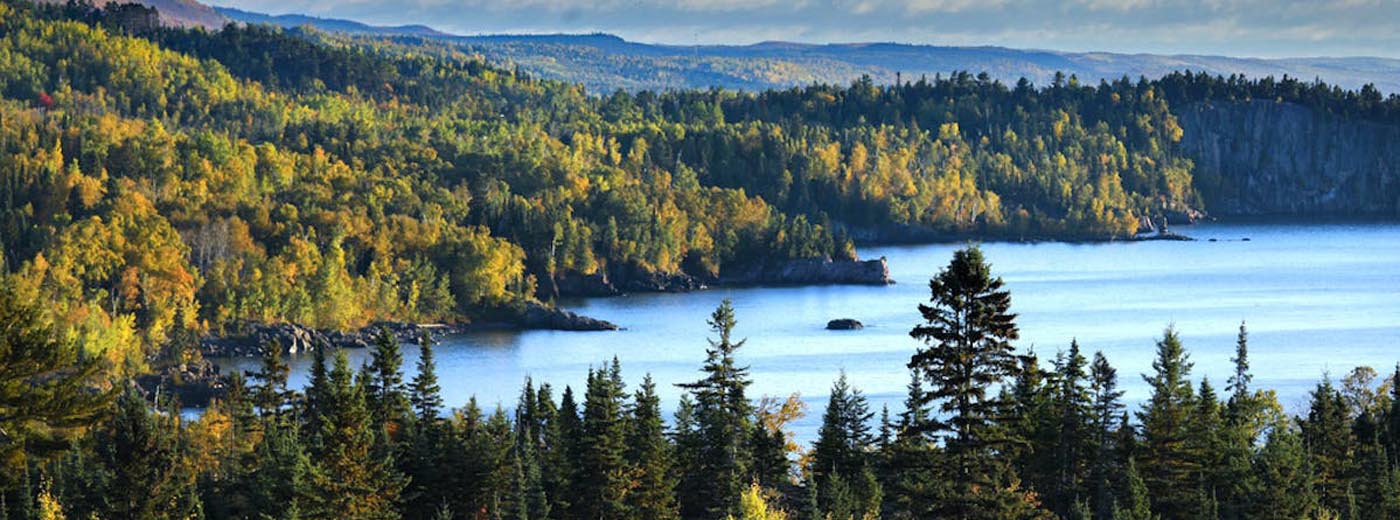Planting Memorial Trees and Celebration Trees in Minnesota

Northern Minnesota forests have become simplified over time due to past management practices, reduced natural disturbance (fire), and increased herbivory from deer. Forests in this region are now composed of fewer and shorter-lived tree species. This unfortunately means they provide less biodiversity value and carbon storage than their potential based on the tree species the plant communities could support. The Nature Conservancy has been working to restore important tree species and expand the ranges of climate-adapted tree species that will improve habitat values in priority landscapes including the headwaters of important watersheds, riparian forests along lake shores and trout streams, and degraded forests along the North Shore of Lake Superior. Restored and resilient forests will provide a wide range of ecological benefits and improved environmental service including improved water quality in trout streams and other water bodies, sediment reduction in streams and lake superior, improved habitat values for species of greatest conservation need according to MN’s state wildlife action plan, soil stabilization in the face of more intense rain events, carbon storage will improve by shifting forest composition to species that live longer and grow larger.
Planting Trees to Honor and Celebrate Life
Tree planting initiatives in Minnesota play a vital role in its restoration while offering a meaningful way to honor loved ones or celebrate life’s milestones. Planting memorial or celebration trees through our program helps reintroduce a mix of spruces, pines, cedars, and birch, creating a diverse forest that supports wildlife and improves water quality. Each tree planted becomes a living tribute, providing critical habitat for species like the Canada lynx and bald eagles, and helping the forest withstand climate fluctuations.
Minnesota’s Superior National Forest, A Treasure Worth Protecting
Superior National Forest in northern Minnesota is a global treasure, recognized by the National Geographic Society as one of the “50 Greatest Places to Visit in a Lifetime.” With over 2,000 pristine lakes covering 440,000 acres—nearly 20% of all lake acreage in the National Forest System—and 3,400 miles of streams, it offers unparalleled opportunities for canoeing, fishing, and hiking. This boreal forest is home to iconic wildlife such as bald eagles, gray wolves, and moose, making it a haven for nature lovers and a symbol of resilience.
Despite its beauty and ecological significance, Superior National Forest is under threat. The forest’s health depends on the diversity of its trees, yet a steep decline in conifer species has disrupted this delicate balance. This loss has wide-reaching effects, including reduced wildlife habitat, declining water quality, and diminished economic and ecological benefits. Compounding the issue, the area is struggling to regenerate naturally, putting its boreal ecosystem at further risk.
Creating a Legacy in the Forest
Whether planting trees to honor a loved one’s memory or commemorate a special achievement, this effort goes beyond restoration—it creates a lasting legacy. The newly planted forest will serve as a sanctuary for wildlife and a symbol of hope, resilience, and growth. Superior National Forest is more than a destination; it’s an opportunity to give back to the planet and create something enduring. By planting trees here, you can connect with a timeless tradition of honoring life through nature, ensuring this incredible landscape thrives for generations.